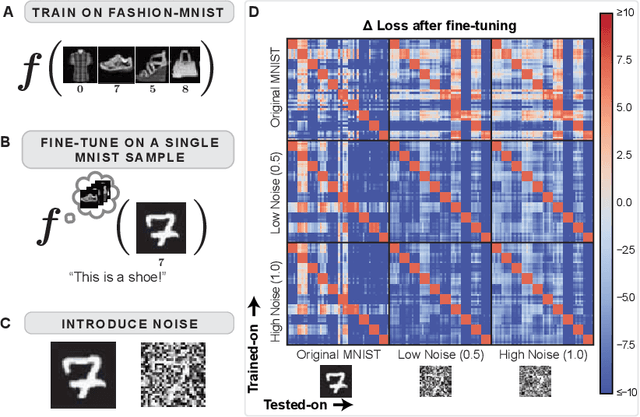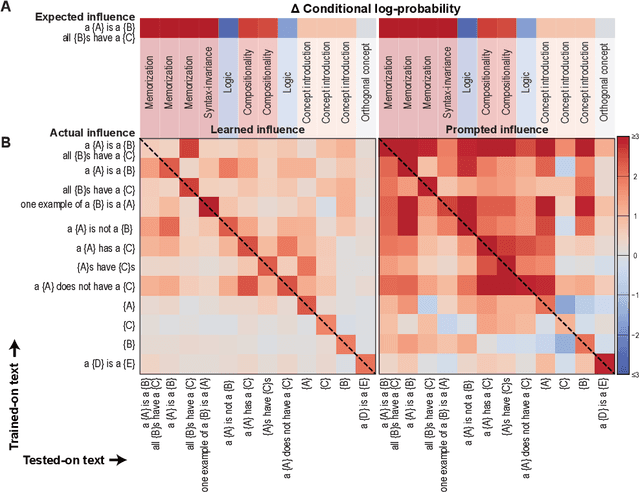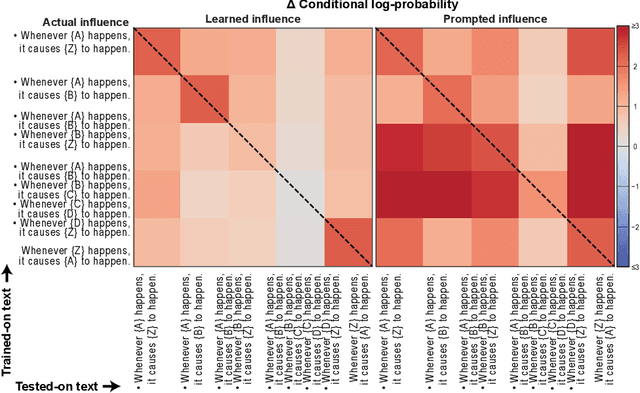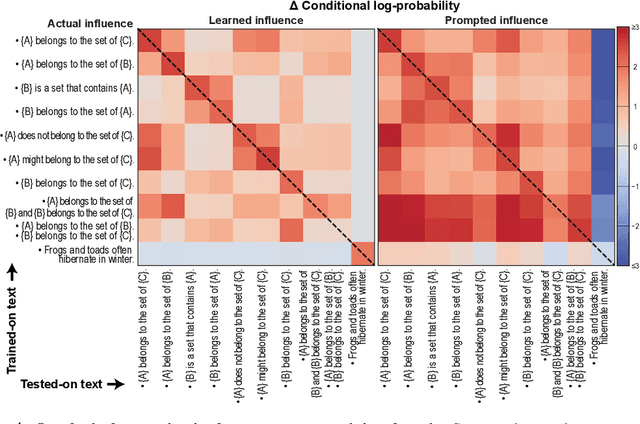Empirical influence functions to understand the logic of fine-tuning
Paper and Code
Jun 01, 2024



Understanding the process of learning in neural networks is crucial for improving their performance and interpreting their behavior. This can be approximately understood by asking how a model's output is influenced when we fine-tune on a new training sample. There are desiderata for such influences, such as decreasing influence with semantic distance, sparseness, noise invariance, transitive causality, and logical consistency. Here we use the empirical influence measured using fine-tuning to demonstrate how individual training samples affect outputs. We show that these desiderata are violated for both for simple convolutional networks and for a modern LLM. We also illustrate how prompting can partially rescue this failure. Our paper presents an efficient and practical way of quantifying how well neural networks learn from fine-tuning stimuli. Our results suggest that popular models cannot generalize or perform logic in the way they appear to.
 Add to Chrome
Add to Chrome Add to Firefox
Add to Firefox Add to Edge
Add to Edge